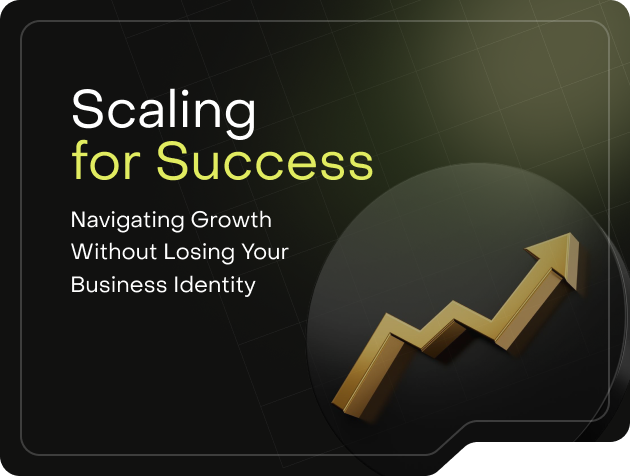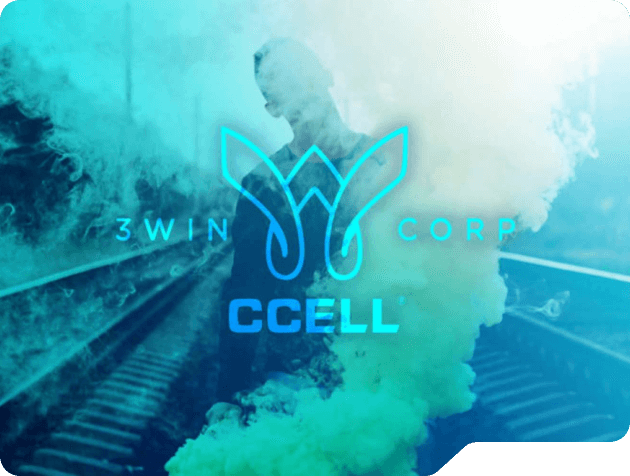The thrill of exponential growth is a hallmark of entrepreneurial success. Customers flock to your product or service, and the future seems exciting.
However, this exciting phase presents a crucial question: how can you effectively scale your operations while preserving the core brand identity that initially resonated with your target audience?
In their pursuit of expansion, many companies inadvertently weaken their brand essence, sacrificing the unique qualities that resonate with their customers. The result is a diluted brand that struggles to maintain its competitive edge.
This guide will outline essential strategies to ensure your brand identity continues to shine brightly as your business expands. We will discuss prioritizing your core purpose, maintaining a customer-centric approach, and building a strong team culture that embodies your brand values. Following these strategies ensures your brand scales authentically, fostering customer trust and loyalty for years.
The Power of Your Business Identity
Your business identity is more than just a logo and a tagline; it’s the essence of who you are. It’s the foundation upon which a company builds trust and connection with its target audience. But what exactly makes up a brand identity? Here, we’ll delve into the three core elements that define your brand’s essence: mission, vision, and values.
Revisit and Reinforce Your Mission
As your business expands, revisiting and understanding your existing mission statement is crucial to ensure growth remains consistent with your core identity. Your mission statement is a concise and powerful declaration that goes beyond simply making money. It defines the problem you solve, the positive impact you strive to create, and the value proposition you offer.
Focus on the “Why.” What drives your passion? What problem are you dedicated to solving for your customers or the world? Don’t simply state what you do; delve deeper into the underlying motivation that sparked your company’s creation.
Your mission statement should also highlight your impact. It’s more than just describing your products and services. It should explain the positive change you aim to create for your target audience. Articulating your desired impact showcases the value you bring, not just what you sell.
Vision: Charting Your Long-Term Course
Your vision statement is a guiding star, propelling your company’s long-term trajectory. It paints a compelling picture of your long-term aspirations. It’s not just about achieving specific goals or market dominance; it’s about the lasting impact you want to create and the legacy you want to leave behind.
A clear understanding of your vision statement keeps your long-term goals in focus. During business growth, it’s easy to become consumed by immediate challenges and potentially lose sight of the grand vision. Regularly revisiting your vision statement is a powerful reminder of your ultimate destination.
Upholding Your Core Values
Your company’s values are the fundamental principles that guide your everyday actions and decision-making. They define how you interact with your customers, employees, and the world. Strong values act as a moral compass, ensuring your choices align with your mission and vision.
Consistency is vital, as your values are a core part of your brand promise. As you expand your reach and offerings, revisiting and reinforcing your existing values ensures that all your strategies and actions align with the initial principles that resonate with your audience.
Understanding your values allows you to identify areas for adaptation, ensuring consistency with your core principles without compromising what makes your brand unique.
Why Business Identity Matters During Scaling
During rapid growth, a clearly defined brand identity becomes even more crucial. It ensures that every decision made aligns with the core values that initially resonated with customers and fosters three key areas: customer loyalty, employee engagement, and market differentiation.
Customer Loyalty
Customers are perceptive. They can sense when a company operates with a genuine purpose and embodies values they care about. A strong brand identity, built on a foundation of shared values with your target audience, fosters trust and connection beyond a simple transaction.
Customers who resonate with your brand’s mission and values become invested in its success. They see themselves as part of a larger story, not just another faceless consumer. This emotional connection translates into brand loyalty, driving repeat business and a willingness to recommend your products or services to others.
Employee Engagement
A strong brand identity isn’t just about attracting customers; it’s also about engaging your employees. Employees are the heart and soul of a company, and their level of engagement directly impacts the customer experience.
Employees who understand the company’s mission, vision, and values feel connected to a larger purpose. They view their work as part of something bigger, are likely to experience increased motivation and productivity, and contribute to a more positive work environment. A clear brand identity provides employees with a framework for decision-making that aligns with the company’s core values. It leads to a more cohesive work environment and a stronger brand overall.
Market Differentiation
In today’s crowded marketplace, standing out from the competition is more important than ever. A strong brand identity helps you achieve this by clearly communicating your unique value proposition.
It goes beyond simply listing your products or services. It tells a story about who you are, what you stand for, and the impact you aim to create. A clear, consistent brand message resonates with target customers seeking what you offer, fostering loyalty and creating a competitive advantage through customer attraction and retention.
Scaling While Staying True to Your Brand
With a firm grasp of your business identity, it’s time to translate that understanding into a growth strategy. Every decision you make during expansion, from product development to marketing campaigns, should be evaluated through the lens of your core identity.
Prioritize the Right Growth
When considering market expansion or product development, critically assess how these initiatives align with your mission, vision, and values. Ensuring that each growth opportunity complements your core purpose and strategic goals is essential to maintaining your business identity.
Here are the questions to guide your assessment:
- Does this opportunity directly address the problem we’re committed to solving? For example, if your mission is to promote financial literacy, launching a new luxury jewelry line might not be the best fit.
- Does it contribute to achieving our long-term vision? Ask yourself if this initiative is a strategic step towards your legacy. Will it help you build the impact you envision for your company?
- Will it allow us to uphold our values consistently throughout the growth process? Consider if you can maintain your commitment to transparency, quality, or ethical sourcing even as you scale.
Define Measurable Goals for Success
While traditional growth metrics like market share and revenue are essential, defining measurable goals that align with your core identity is crucial. These goals demonstrate the impact your brand is making.
Set goals that directly connect with your mission statement. For example, if your mission is to provide access to educational resources, a goal could be to increase the number of users on your e-learning platform by X% within a specific timeframe, focusing on underserved communities.
Develop goals that reflect your core values. If customer centricity is a core value, a goal could be to achieve a specific customer satisfaction score or implement a system for gathering and responding to customer feedback within a set timeframe.
Scaling with the Customer in Mind
As you scale your business, keeping the customer at the forefront of your strategy is paramount. Rapid growth can sometimes lead to a shift in focus, where the pursuit of expansion overshadows the commitment to customer satisfaction.
Personalization plays a crucial role in maintaining customer loyalty during growth periods. Leverage customer data to tailor your products, services, and communications to meet individual needs. This approach enhances the customer experience and reinforces customers’ personal connection with your brand.
Transparency and trust are foundational to a customer-centric approach. Be honest about your growth plans and how they will impact your customers. Whether it’s changes in service delivery, product availability, or customer support, keeping your customers informed fosters trust and loyalty.
Building a Strong Team Culture
Your employees are the voice of your brand. To ensure they reflect your identity, prioritize hiring for culture fit. Hire individuals who share your passion for your mission, vision, and values. Their enthusiasm will translate into a more genuine brand experience for your customers.
During the hiring process, go beyond technical skills. Seek individuals who genuinely connect with your mission, vision, and values. Their passion and enthusiasm will resonate with your customers, creating a more authentic brand experience. Imagine a team that truly believes in your company’s impact — their conviction will shine through in every interaction.
Provide opportunities for your team to learn to embody your brand values in their interactions and decision-making. It could involve customer service workshops emphasizing empathy and transparency or leadership training promoting collaboration and open communication.
Maintaining Brand Consistency Across All Channels
As your brand expands, it becomes crucial to ensure a consistent voice and message across all communication channels. Maintaining consistency across interactions simplifies navigation for your audience, solidifying your brand image and fostering trust.
Imagine a customer encountering your brand on social media, visiting your website, and finally interacting with your customer service team. In each touchpoint, they should experience the same core brand essence – the same voice, tone, and values.
Consistency lies in a clear brand style guide, acting as a blueprint, outlining your brand voice, tone, visuals, and messaging. Craft compelling brand stories that showcase your values and mission in action. Address any inconsistencies and adapt your approach as needed. This proactive monitoring ensures your brand message remains clear and impactful across all touchpoints, solidifying your brand identity in the marketplace.
Ready to Scale for Success
Scaling a business isn’t just about chasing numbers. It’s about navigating growth while preserving your brand’s unique identity. A strong brand identity is your compass in the ever-evolving sea of business. It’s the anchor that keeps you grounded in your core values and the guiding star that illuminates the path to long-term success.
This identity, built on your mission, vision, and values, is the cornerstone of customer trust and loyalty. Neglect it during expansion, and you risk losing the foundation of your success. Here’s the good news: prioritizing your brand identity during growth unlocks many benefits. It becomes your guiding light, ensuring every decision aligns with your core values.
For over 12 years, AVINTIV has been a trusted partner for over 400 brands, helping them achieve remarkable growth while staying true to their unique identities. Our award-winning agency services encompass everything you need to scale for success.
Don’t sacrifice authenticity in the pursuit of growth. Ready to unlock your business’s full potential and scale for success? Contact AVINTIV today to turn your vision into a reality and build a thriving brand.





